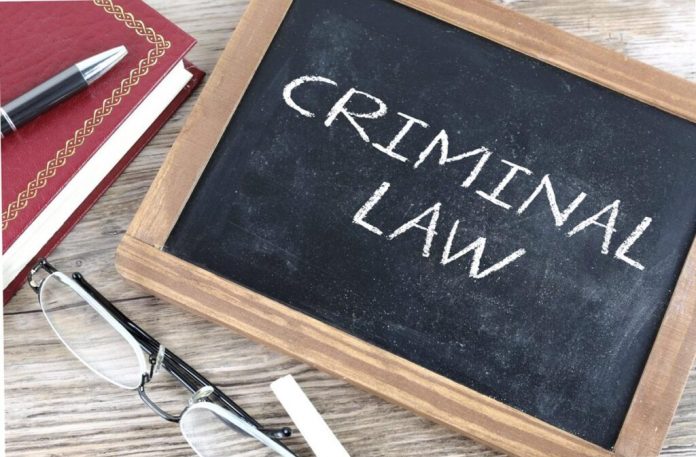This article is written by Shukla Dutta, a student of B.A.LL.B. from the University of Calcutta. This article discusses when a person is eligible to be discharged from the charges made against him.
It has been published by Rachit Garg.
Table of Contents
Introduction
‘Let a hundred guilty be acquitted, but one innocent should not be convicted.’
The above quote, expressed by the English jurist William Blackstone, is the fundamental principle behind Section 239 of the Code of Criminal Procedure, 1973. Section 239 of the Code deals with discharge, i.e., when an accused shall be discharged. Frequently, it happens that one person has been charged with an offence that he hasn’t committed. In simple words, he has been charged maliciously. To protect the victims of such incidents, the Criminal Procedure Code provides a remedy that is given under Section 239 of the CrPC. As this Section provides, if the allegations made against a person are groundless and false, he can file a discharge application under this Section. During the hearing of the case, if the counsel for the complainant fails to produce sufficient evidence before the court to prove the charges against the accused and the court is satisfied that the accused hasn’t committed any such offences, he shall be entitled to be discharged in the absence of any prima facie case against him.
What is a discharge application
A discharge application is a remedy provided to the person who has been charged maliciously. If the allegations that have been made against him are false, the law grants him the right to file an application for discharge before the concerned court of law. If his opposing counsel fails to prove the charges against him in court, he is entitled to an acquittal.
If the judge believes that there are not sufficient grounds to proceed against the accused, the person may file an application even before the charges have been brought against him.
However, not all types of criminal cases require a discharge application to be filed. Only in cases instituted on a warrant can a discharge application be filed.
The term “warrant case” has been defined under Section 2(x) of the Criminal Procedure Code. As per this Section, a warrant case is made for an offence of a serious nature punishable by death, life imprisonment, or more than 2 years’ imprisonment.
The division of cases into summons and warrant cases is based on the amount of punishment that can be awarded. Those cases that are punishable with imprisonment for two years or less are summons cases, and the rest are all warrant cases.
A summons case can be tried as a warrant case in the interest of justice. In the same way, a case that is already being tried as a warrant case can be changed to a summons case if justice requires it. However, a magistrate should pass a specific order to this effect, and the order sheet should disclose such a change of procedure, although omission is not fatal.
Contents of a discharge application
When the court gets an application for discharge, it must take into account the following:
- The police report was submitted in accordance with Section 173 of the CrPC.
- Both the prosecution and accused have got sufficient opportunity to be heard.
- The magistrate finds the charges are false and groundless.
Upon the satisfaction of the above facts, the magistrate may discharge the accused.
Procedure for filing a discharge application
To avoid any embarrassment during the hearing, the accused must keep in mind the following points while filing a discharge application:
- That there are insufficient facts and evidence in the police report.
- That it should not be possible to determine the material facts of the case.
- That the allegations against him are imprecise and baseless.
- That the prosecution failed to provide any witnesses.
After a proper examination of these facts and evidence, if the magistrate is satisfied that these grounds are sufficient to discharge the accused, the application for discharge is accepted.
If the police report fails to establish a prima facie case against the accused, then the court has the authority to discharge the accused, and Section 239 provides a remedy for the accused in such situations.
Relevant case law
Sh. Satish Mehra v. Delhi Administration and Anr. (1996)
In this case, the appellant’s wife accused him of molesting their 3-year-old daughter. The police filed the chargesheet for the offences under Sections 354, 376 and 498A of the Indian Penal Code. The Supreme Court directed the Sessions Court to see whether charges could be framed against the accused. The Session Judge framed charges for the offences under Sections 354 and 376 and observed that no charge could be framed under Section 498A. The question was whether the Session Court should have framed the charge against the appellant.
The Hon’ble Supreme Court observed that the magistrate needs to give the prosecution and the accused one opportunity to be heard along with examining the police report and the documents sent as per Section 173 of the same Code. While framing charges, the Sessions Judge missed some relevant aspects of the case. It was proven that the wife of the appellant taught her daughter to give a statement against him in court. Therefore, the appellant moved to the Supreme Court against the charges made by the Session Judge. The Supreme Court found no grounds to proceed with the trial. Hence, the proceeding and the charges were quashed, and the appellant was discharged.
Provisions that deal with discharge application
Section 239 of the Criminal Procedure Code, 1973, deals with discharge applications. If, after examining the reports submitted by the police under Section 173 of the said Code, the magistrate determines that the charges made and the evidence produced against the accused are vague and unjustified, the court may discharge the accused.
On the other hand, the court is bound to discharge the accused if no prima facie case has been established after identifying the evidence in the case under Section 245 (1) of the Code.
Exception
Section 245(2) is an exception to this rule.
It says that if the charges against a person are vague and not backed up by evidence, the court can let them go free without even looking at the evidence.
Section 239 CrPC : a detailed analysis
In criminal cases, the general rule of law is that the police produce the final charge sheet after completing the investigation against the accused under Section 173 of the Code of Civil Procedure. Then, the accused person is put on trial for framing charges against him before the magistrate. However, the Code of 1973 contains a provision in Sections 227 and 239 that allows an accused to be discharged from the charges made against him. These can be done in warrant cases only.
Section 227 of the CrPC provides that if the judge, after going through the records and documents submitted and after hearing the prosecution and the accused, comes to the conclusion that no sufficient grounds exist to proceed against the accused, he shall discharge him and record his reasons for doing so. This section is applicable to session trials only.
According to Section 239, if a magistrate, after reviewing the police report and the documents sent with it and hearing the prosecution and accused properly, reaches the conclusion that the charges framed against the accused are baseless, he may discharge the accused after recording the reasons for doing so. This is done in warrant cases only.
Scope of Section 239 CrPC
The Supreme Court has held that the present section should be read along with Section 240 (sub-sections (2) and (3) of Section 251A of the old code). If there is no basis for presuming that the accused has committed an offence, the charge must be considered groundless, which is the same thing as saying that there is no basis for framing the charge under the next Section. The term “charge” used in Section 239 is only in the sense of allegation or accusation. An elaborate examination of statements recorded during a police investigation is not warranted. Before making a decision, the magistrate must consider all the material referred to in this section. When sufficient material is present before the magistrate as per the provisions of Section 173, the accused shall be discharged on the sole ground of the public prosecutor’s absence.
An order of discharge based on an error of record is not proper and cannot be sustained.
The accused was given the opportunity to be heard, including the right to present documents at the pre-charge stage.
Object of Section 239 CrPC
Section 239 of the CrPC specifies the circumstances under which an accused shall be discharged. The magistrate, upon reviewing the police report and the documents produced in support of the case against the accused as mentioned under Section 173, may discharge the accused and record the reasons for such discharge if he is satisfied that the charges are groundless, after giving the prosecution and the accused an opportunity to be heard.
Before discharging the accused, the magistrate must properly examine the grounds to identify whether the ground for presuming the commission of offence exists or whether the charge is groundless and whether the offences constitute a prima facie case or not.
It is necessary that the magistrate record the reasons why he is discharging the accused. This is done because his order might be revised by the higher courts. If sufficient documents and evidence indicate that prima facie charges have been made against the accused, the magistrate cannot discharge him; otherwise, the magistrate shall discharge him.
What are documents under Section 173 as stated in Section 239 CrPC
For discharging an accused under Section 239 CrPC, the court has to consider the police report and documents sent with it under Section 173.
Under Section 173 (2) (i), the officer-in-charge of the concerned police station is required to submit a police report to the magistrate. The police report shall be in the form prescribed by the State Government stating –
- Name of the complainant (s) vs. defendant (s);
- Nature of the information;
- Names of the persons who appear to be acquainted with the circumstances of the case;
- Whether any offence seems to have been committed and, if so, by whom;
- Whether the accused has been arrested;
- Whether he has been released on his bond and if so, whether with or without sureties;
- Whether he has been forwarded into custody under Section 170.
- Whether the report of the medical examination of the woman has been attached where the investigation relates to an offence under Section 376, 376A, 376B, 376C, 376D, or Section 376E of the Indian Penal Code.
According to Section 173 (5), the police officer should, when the report is in respect of a case under Section 170, forward to the magistrate all documents or other relevant extracts and also the statements recorded under Section 161 of persons on whom the prosecution relies. Where a police report submitted under Section 173 (2) was not accompanied by necessary documents as required under Section 173 (5), as in the case of Raghubir Saran Jain v. State (1995), it was held that the magistrate was not justified in taking cognizance based on such an incomplete report, and the order of cognizance was quashed.
Relevant case law
Manakshi Bala v. Sudhir Kumar (1994)
In this case, the Additional Chief Judicial Magistrate, Ludhiana, framed charges under Sections 406 and 498A of the Indian Penal Code. All the accused pleaded not guilty. Therefore, the magistrate fixed a date for the recording of prosecution evidence. However, before the same, the Punjab and Haryana High Court took up the petition for a final hearing, along with another petition that the accused persons subsequently filed under Section 482 CrPC for setting aside the charges, and quashed the entire proceeding, including the charges framed against the accused, by a common order.
The Supreme Court observed that the High Court dealt with the matter in the wrong way and opposed settled principles of law. The hon’ble court held that the offences for which the charge sheet is submitted and cognizance is taken should be triable as warrant cases, and the magistrate has to proceed according to Sections 239 and 240 of the Code while framing charges. Under the above sections, the magistrate is first required to consider the police report and the documents sent along with it under Section 173.
Duties of a magistrate while discharging the accused
While discharging an accused under Section 239, the magistrate must perform the following duties:
- Examine the police report submitted by police in accordance with Section 173,
- Consider the documents produced in support of the charges according to Section 173,
- Give the prosecution sufficient opportunity of being heard, and
- Hear the accused properly.
After performing the above-mentioned duties, if the magistrate finds the charges made against the accused are groundless and vague, he shall discharge the accused.
Judicial pronouncements of Section 239 CrPC
Amit Sibal v. Arvind Kejriwal (2016)
In this case, the appellant filed a complaint of defamation against the respondents under Section 200, CrPC for the offences punishable under Sections 500 and 501 read with Section 34, IPC. The learned metropolitan magistrate passed the summons order. Challenging that order, the respondents filed a petition under Section 482 of the CrPC in the High Court of Delhi. The High Court permitted the respondents to raise the pleas that were raised in the said petition before the Metropolitan Magistrate at the stage of framing of notice under Section 251, CrPC. It was observed that, at that stage, the metropolitan magistrate should consider them and pass a speaking order. The honourable Court held that the law does not empower a magistrate to discharge an accused person in a summons trial to complain case. But Section 397 of the Code of Criminal Procedure empowers an accused in a summons case to request a revision.
It was further observed that the protection that Section 239 of the Code provides is an essential legal provision. It defends the person who has been targeted by the false accusations. Nobody should be punished for an offence they did not commit.
Rumi Dhar v. State of West Bengal (2009)
In this case, a FIR was registered by the CBI under Sections 120B, 420, 467, 468, and 471 of the Indian Penal Code. The bank officers were also prosecuted under the Prevention of Corruption Act, 1988. There was a settlement between the appellants and the banks. An application under Section 239 of the CrPC was filed for the dropping of the criminal proceedings. The Supreme Court held that before considering the discharge application of an accused made under Section 239 CrPC, the magistrate has to go into the details of the accusations made against him.
Conclusion
“Let a hundred guilty be acquitted, but one innocent be convicted,” states that one innocent person, i.e., one who did not commit the offence for which he has been charged, should not be found guilty by a court of law. This is because if such circumstances happen, people will lose faith in the law and there will be no respect for the judicial system. So, Section 239 of the Code of Criminal Procedure acts as a remedy in such circumstances. In Sanjay Kumar Rai v. State of Uttar Pradesh and Anr. [Cr.A.No. 472/201], the Hon’ble Supreme Court held “discharge” as a valuable right of the accused. When the public prosecutor fails to prove the charges made against the accused and the magistrate opines that the charges are vague and unjustified, he must discharge the accused.
FAQs on Section 239
What is the difference between 227 and 239 CRPC?
If the Sessions Court considers that no sufficient ground is there to proceed against the accused, it can discharge the accused under Section 227, CrPC. On the other hand, if the magistrate determines that the charges against the accused are without merit, he must discharge him under Section 239.
What is “discharge” under CrPC?
The term “discharge” is not defined under the Code of Criminal Procedure, 1973. But Black’s Law Dictionary defines discharge as “the opposite of charge; to release, liberate, annul, unburden, disencumber.” Simply put, discharge comes into play after the police investigate a criminal offence and produce a charge sheet against the accused under Section 173, CrPC, or a complaint under Section 190, CrPC.
What are the legal remedies available when charges are framed erroneously disregarding the discharge petition?
In such a case, the accused may file a revision petition in the Court of Session or High Court against the order of discharge.
Can an accused person produce documents in court to support his discharge application?
No. While deciding whether an accused shall be released on bail or not, the court only considers the police report and documents sent, according to Section 173. The accused are not permitted to produce any documents.
References
- Kishori Lal v. Mahadeo, 1993 Cr LJ 1173 (All).
- Sri Umesh Kumar Ipsvs The State of Andhra Pradesh (2008) 2 SCC 574.
- State v. MK Raghu, 1989 Cr LJ NOC 205 (Ker).
- State of Mizoram v. K Lalruata, 1992 Cr LJ 970 (Gau).
- Nitai Pada Das v. Sudarsan Saranji, 1991 Cr LJ 3012 (Ori).
- Vinod Kumar v. State of Haryana, 1987 Cr LJ 1335.
Students of Lawsikho courses regularly produce writing assignments and work on practical exercises as a part of their coursework and develop themselves in real-life practical skills.
LawSikho has created a telegram group for exchanging legal knowledge, referrals, and various opportunities. You can click on this link and join:
Follow us on Instagram and subscribe to our YouTube channel for more amazing legal content.
 Serato DJ Crack 2025Serato DJ PRO Crack
Serato DJ Crack 2025Serato DJ PRO Crack












 Allow notifications
Allow notifications



